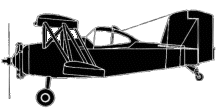
ASN Wikibase Occurrence # 72073
This information is added by users of ASN. Neither ASN nor the Flight Safety Foundation are responsible for the completeness or correctness of this information.
If you feel this information is incomplete or incorrect, you can submit corrected information.
| Date: | Saturday 30 January 2010 |
| Time: | 10:30 |
| Type: |  Grumman G-164B Turbo Ag-Cat |
| Owner/operator: | Pleasant Valley Aviation |
| Registration: | N6799K |
| MSN: | 493B |
| Total airframe hrs: | 10712 hours |
| Engine model: | P & W R-1340-AN-1 |
| Fatalities: | Fatalities: 0 / Occupants: 1 |
| Aircraft damage: | Substantial |
| Category: | Accident |
| Location: | At a farm on Airport Road near Pullman-Moscow Regional Airport, WA -
 United States of America United States of America
|
| Phase: | Initial climb |
| Nature: | Ferry/positioning |
| Departure airport: | Pullman, WA (KPUW) |
| Pullman, WA (KPUW) | |
| Investigating agency: | NTSB |
| Confidence Rating: |
Due to the cold temperatures on the morning of the flight, the pilot followed the “Cold Weather Engine Operation” procedures in the Ag-Cat pilot handbook. Because those procedures called for the engine oil and cylinder head temperatures to reach a minimum level before takeoff, the pilot had run the engine on the ground for about 30 minutes prior to performing the pre-takeoff run-up check. During that check he exercised the carburetor heat system, which worked as prescribed. During the long run-up, a bird’s nest became dislodged and was sucked into the area near the carburetor inlet screen during the carburetor heat test. The condition of the nest remains indicated that during the increased volume and velocity air flow during takeoff, the nest partially disintegrated and ultimately covered a significant portion of the inlet screen surface. According to the Federal Aviation Administration inspector who monitored the engine inspection, the nest was located inside the warm air pick-up ducting, which is an area that the pilot would not normally see into or check unless there was external visual evidence to indicate the need for a further inspection.
Probable Cause: A partial loss of engine power during takeoff due to a bird's nest being sucked into the induction air ducting.
Accident investigation:
 |
|
Sources:
NTSB
Location
Revision history:
| Date/time | Contributor | Updates |
|---|---|---|
| 30-Jan-2010 14:11 | RobertMB | Added |
| 31-Jan-2010 04:48 | RobertMB | Updated [Time, Aircraft type, Source, Narrative] |
| 01-Feb-2010 01:06 | RobertMB | Updated [Aircraft type, Registration, Cn, Operator, Source, Narrative] |
| 01-Feb-2010 01:07 | RobertMB | Updated [Aircraft type, Registration] |
| 21-Dec-2016 19:25 | ASN Update Bot | Updated [Time, Damage, Category, Investigating agency] |
| 26-Nov-2017 15:21 | ASN Update Bot | Updated [Cn, Operator, Other fatalities, Departure airport, Destination airport, Source, Narrative] |
Corrections or additions? ... Edit this accident description
The Aviation Safety Network is an exclusive service provided by:


 ©2024 Flight Safety Foundation
©2024 Flight Safety Foundation